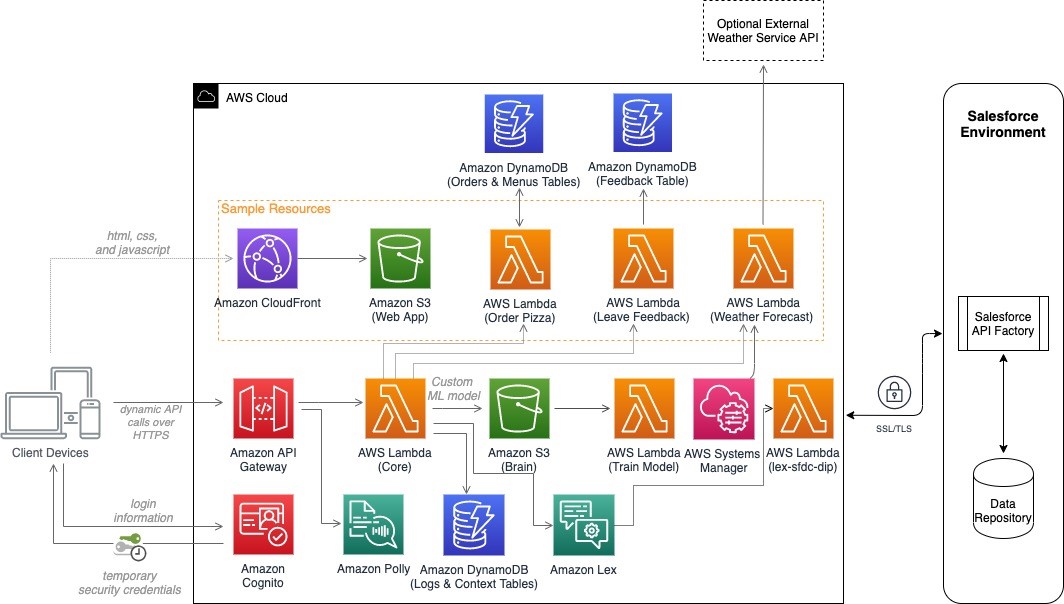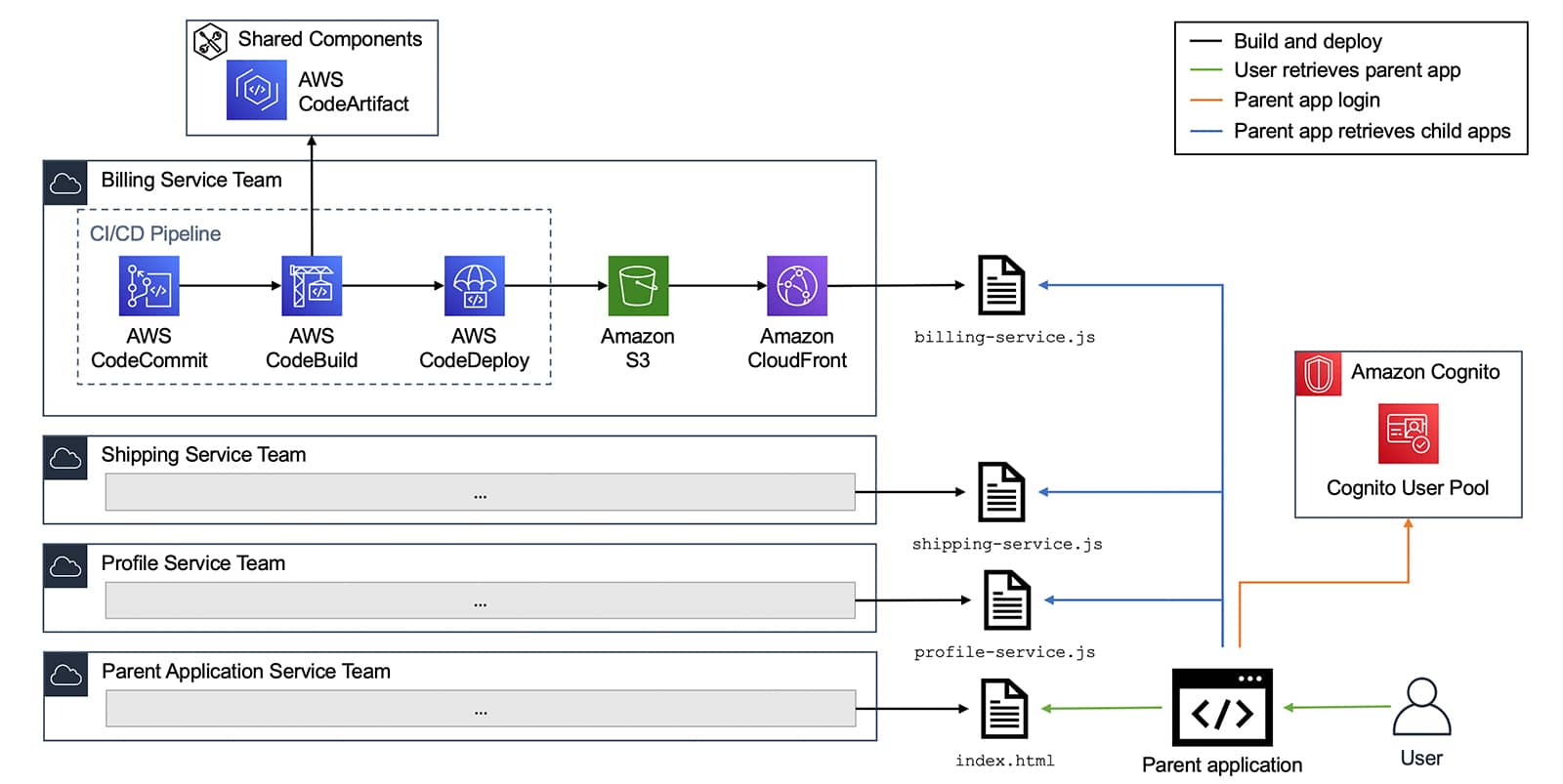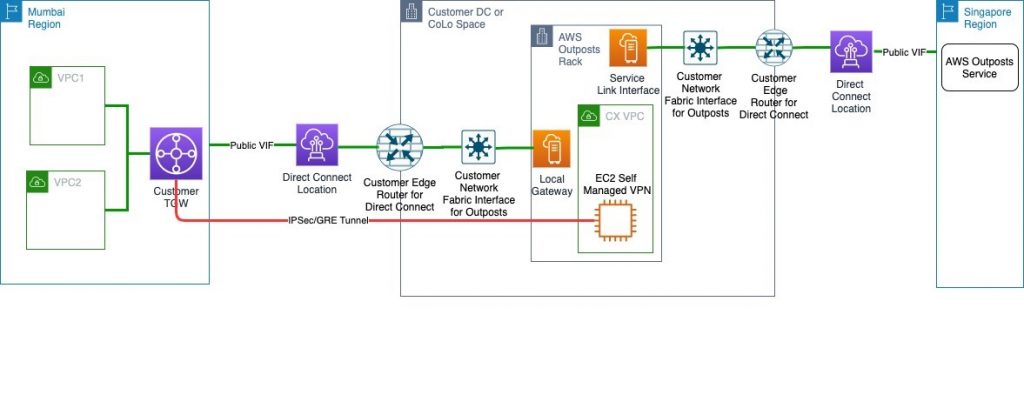AWS Architecture Blog
Category: Networking & Content Delivery
Build Chatbots using Serverless Bot Framework with Salesforce Integration
Conversational interfaces have become increasingly popular, both on web and mobile. Businesses realize these interactions are resulting in quicker resolutions of customer concerns than a more traditional approach of agent interactions. An intelligent chatbot on top of customer-facing platforms comes with inherent benefits. Among these are 24/7 customer support with no agent wait-times, improved operational […]
Micro-frontend Architectures on AWS
A microservice architecture is characterized by independent services that are focused on a specific business function and maintained by small, self-contained teams. Microservice architectures are used frequently for web applications developed on AWS, and for good reason. They offer many well-known benefits such as development agility, technological freedom, targeted deployments, and more. Despite the popularity […]
Using Route 53 Private Hosted Zones for Cross-account Multi-region Architectures
This post was co-written by Anandprasanna Gaitonde, AWS Solutions Architect and John Bickle, Senior Technical Account Manager, AWS Enterprise Support Introduction Many AWS customers have internal business applications spread over multiple AWS accounts and on-premises to support different business units. In such environments, you may find a consistent view of DNS records and domain names […]
Serving Content Using a Fully Managed Reverse Proxy Architecture in AWS
With the trends to autonomous teams and microservice style architectures, web frontend tiers are challenged to become more flexible and integrate different components with independent architectures and technology stacks. Two scenarios are prominent: Micro-Frontends, where there is a single page application and components within this page are owned by different teams Web portals, where there […]
Field Notes: Setting Up Disaster Recovery in a Different Seismic Zone Using AWS Outposts
Recovering your mission-critical workloads from outages is essential for business continuity and providing services to customers with little or no interruption. That’s why many customers replicate their mission-critical workloads in multiple places using a Disaster Recovery (DR) strategy suited for their needs. With AWS, a customer can achieve this by deploying multi Availability Zone High-Availability […]
Fast and Cost-Effective Image Manipulation with Serverless Image Handler
As a modern company, you most likely have both a web-based and mobile app platform to provide content to customers who view it on a range of devices. This means you need to store multiple versions of images, depending on the device. The resulting image management can be a headache as it can be expensive […]
Snowflake: Running Millions of Simulation Tests with Amazon EKS
This post was co-written with Brian Nutt, Senior Software Engineer and Kao Makino, Principal Performance Engineer, both at Snowflake. Transactional databases are a key component of any production system. Maintaining data integrity while rows are read and written at a massive scale is a major technical challenge for these types of databases. To ensure their […]
The Satellite Ear Tag that is Changing Cattle Management
Most cattle are not raised in cities—they live on cattle stations, large open plains, and tracts of land largely unpopulated by humans. It’s hard to keep connected with the herd. Cattle don’t often carry their own mobile phones, and they don’t pay a mobile phone bill. Naturally, the areas in which cattle live, often do […]
Architecting for Reliable Scalability
Cloud solutions architects should ideally “build today with tomorrow in mind,” meaning their solutions need to cater to current scale requirements as well as the anticipated growth of the solution. This growth can be either the organic growth of a solution or it could be related to a merger and acquisition type of scenario, where […]
Mercado Libre: How to Block Malicious Traffic in a Dynamic Environment
Blog post contributors: Pablo Garbossa and Federico Alliani of Mercado Libre Introduction Mercado Libre (MELI) is the leading e-commerce and FinTech company in Latin America. We have a presence in 18 countries across Latin America, and our mission is to democratize commerce and payments to impact the development of the region. We manage an ecosystem […]









